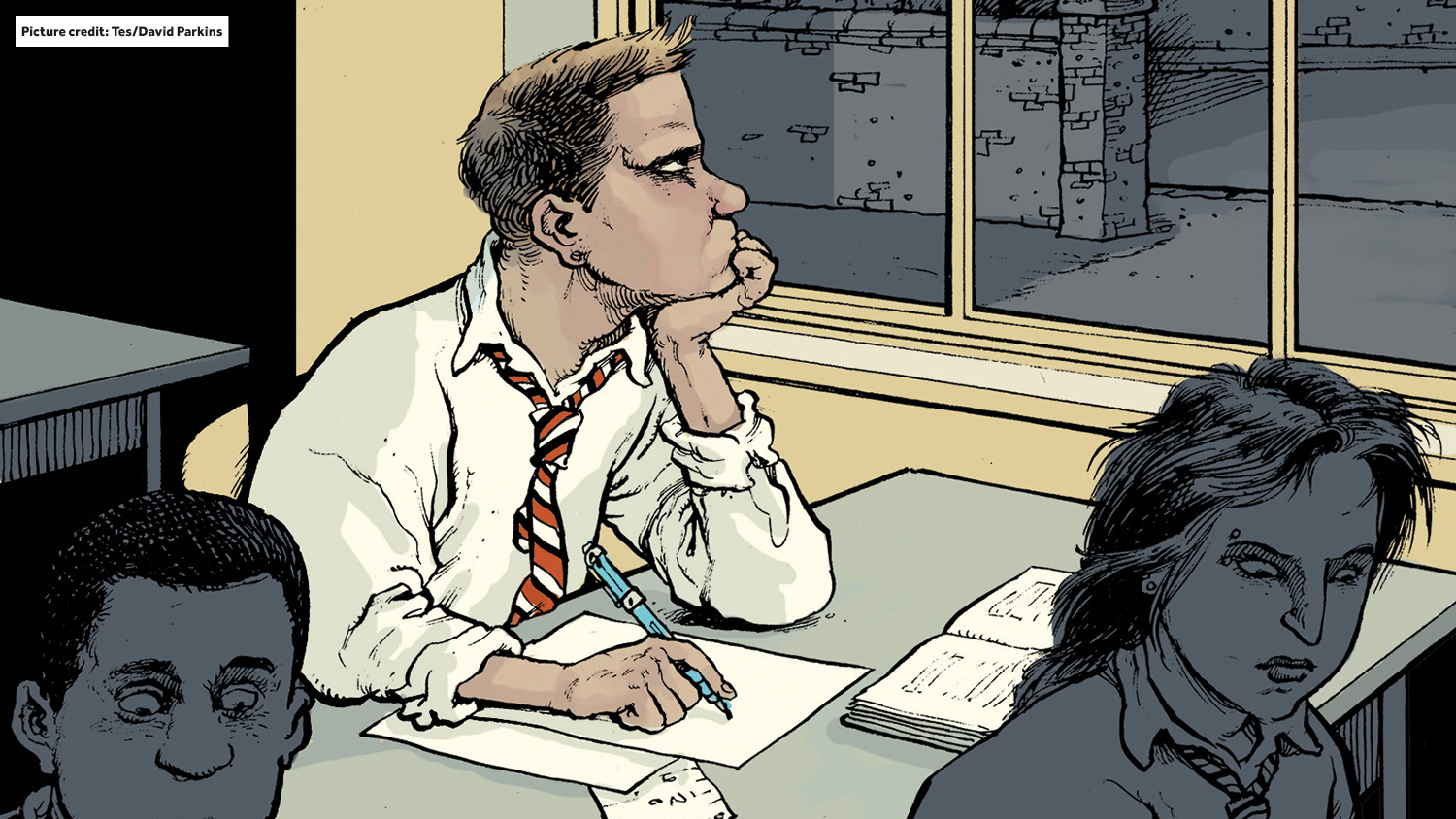- Home
- ‘Exclusion is the first step on a dangerous road’
‘Exclusion is the first step on a dangerous road’

When I was growing up, the part of London that I called home was dubbed “murder mile”. It was the few thousand feet in the country where the most murders reportedly took place. Many of the killed and their killers were young black men, and their deaths were often related to gang involvement.
This began to change when the New Labour government came to power in 1997 on the back of Tony Blair’s famous pledge to get “tough on crime, tough on the causes of crime” – and to tackle youth crime in particular. Among the practical targets set were an improvement in school attendance and a reduction in the number of exclusions from school – especially in the capital.
It is depressing to see history now repeating itself. School exclusions nearly halved between 2006-07 and 2012-13, but have risen year on year since then, with a 40 per cent increase over the past three years alone. This official stat looks bad enough but, in fact, it masks the full scale of the problem.

Officially reported exclusions have risen, but unofficial exclusions have rocketed. Research I published at the Institute for Public Policy Research thinktank last year showed that more and more children are being covertly excluded, or “managed out”, of mainstream schools into pupil referral units (PRUs).
Which local authorities have the biggest PRU populations? Many are to be found where we might least expect them, given the success story of the city’s schools in recent years: London.
The issue has become perhaps even more pressing in recent months, in light of the surge in violence on the streets of the capital.
Pathway to prison
School exclusion and offending are linked. One in every 200 pupils is educated in a school for excluded pupils, but one-in-two prisoners was excluded when at school.
Many teachers question whether it’s the job of schools to worry about young offending and crime rates, but given these stats, surely the answer has to be yes. And during the year and a half that I’ve spent researching exclusion, it has become increasingly clear to me that much of this relationship is causal – and preventable.
It’s time to get tough on the causes of exclusion. As schools, teachers and a wider education system, more focus is needed on diverting vulnerable pupils away from the path that leads to exclusion – and addressing the underlying reasons that lead to these kids being kicked out of school.
Exclusion is usually linked to something that is going badly wrong in a young person’s life. It is no coincidence, for instance, that children known to social services are 20 times more likely to be permanently excluded than their peers. Yet often the process of exclusion puts vulnerable young people further at risk.
Let’s take a difficult example: carrying a knife. In most city schools, there is, rightly, a “zero tolerance” knife policy. Heads exclude for the purpose of the immediate safety of the school community, as well as to set expectations that weapons won’t be tolerated. Yet many young boys carry weapons, not because they are some kind of gang kingpin, but because they are scared of the gangs operating where they live.
And when they are excluded, it does not change their behaviour for the better. Oftentimes it does the opposite: being sent home puts a young person in the path of gangs that they would otherwise avoid. It’s a troubling paradox.
In my research, I’ve seen too many similar stories of safeguarding risks: children as young as 13 who are already getting access to drugs; kids who have experienced domestic violence and are becoming violent in their own relationships. Too often, exclusion puts them back in the environment that is fuelling their dangerous behaviour, and increases these risks.
There are solutions out there. In Kensington and Chelsea, one programme places students who have been excluded for carrying a knife on a knife-crime prevention programme during the exclusion period, instead of sending them home from school. Meanwhile, I know of some London heads who take a novel approach to exclusion, ensuring that the child still comes to the safety of the school, even when they’re being temporarily “excluded”. These children are educated in a separate centre on the school site, rather than being left unsupervised or unsafe at home.
While these initiatives are to be welcomed, we also need more focus on raising the quality of education for excluded pupils, both in the PRU sector and by improving reintegration into the mainstream. Too often, exclusion sets a pathway to prison, with fewer opportunities to gain qualifications and employment.
The majority of exclusions are of children close to sitting their GCSEs. This is a huge challenge for the sector that serves them. Most PRUs were originally established as a referral route – allowing excluded children to be referred to a different school for a new start, or else to be referred onto specialist provision. Many now have near-permanent students for whom it is their full-time school.
These small schools are being asked to provide qualifications and routes into work for the challenging children with whom they work.
This is the hardest job in education, and the schools that do it face the biggest recruitment crisis. Senior-leader vacancies doubled in these schools between 2011 and 2016, while the rate stayed stable in mainstream schools. And the number of unqualified teachers working with excluded children rose dramatically over a similar period; excluded children are now twice as likely to have an untrained or temporary teacher.
Unsurprisingly, educational outcomes are dire – and it’s rarely the fault of hardworking teachers. The absence rate in PRUs is 32 per cent, compared with 4 per cent in mainstream schools. Despite education being compulsory until age 18, excluded pupils have a one-in-two chance of not being in education, employment or training by the time they’re 16. At this point, only 1 per cent achieve the five good GCSEs they would normally need to access employment.
Breaking the cycle
In the context of few qualifications and too much time spent out of school, it is unsurprising that gang involvement and drug dealing is rivalling established routes to work for these young people.
This storyline is not inevitable. In Tower Hamlets, for instance, a strong “fair access” panel sees schools committing to giving a fresh start to children excluded from other schools. And its well-funded PRU attracts high-performing, well-qualified teachers. Of the pupils who are still studying there at 16, a staggering 73 per cent go on to further education, training or employment.
These examples prove that we don’t have to be stuck in the vicious exclusion cycle.
A new government focus on exclusion is a welcome opportunity to focus on this neglected area once again. To date, there has been too little research into what works and too few opportunities to share best practice.
But for lasting change, beyond governments, we also need a new will and a new expertise in the teaching workforce. What we really need is for the next generation of school leaders to be willing to deflect the pressures that come from beyond the school gates – both from their communities and from the government in the form of accountability – and challenge the assumptions about the role they can play in changing children’s lives for the better.
This piece first appeared in Tes magazine in May. To subscribe, click here.
Kiran Gill is a former teacher. She is now chief executive of The Difference, a charity she set up to train teachers and school leaders to be specialists in reducing exclusion.
On January 12, leading praticioners will gather in London for a unique CPD event which aims to build a dialogue around supporting the needs of vulnerable pupils. You can read more about the event here. The Difference tweets as @TheDifferenceEd
Register with Tes and you can read two free articles every month plus you'll have access to our range of award-winning newsletters.
Keep reading with our special offer!
You’ve reached your limit of free articles this month.
- Unlimited access to all Tes magazine content
- Save your favourite articles and gift them to your colleagues
- Exclusive subscriber-only stories
- Over 200,000 archived articles
- Unlimited access to all Tes magazine content
- Save your favourite articles and gift them to your colleagues
- Exclusive subscriber-only stories
- Over 200,000 archived articles